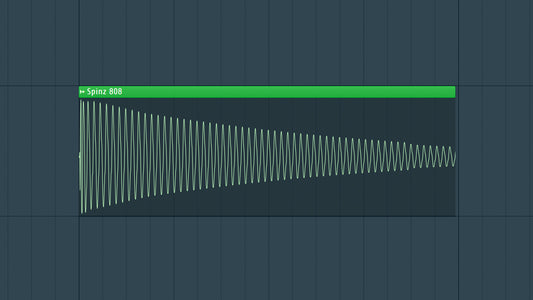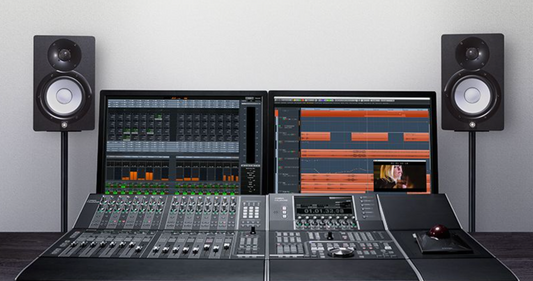Introduction
Mixing is the one of the number 1 things that made my music production better. I have spent 15+ years learning this valuable skill, and mastering the art of mixing is crucial for achieving professional-sounding music. In this blog post, we'll explore 20 essential tips that will guide you through the intricate landscape of mixing, helping you sculpt a sound that captivates listeners and stands out in the crowded musical landscape.
DOWNLOAD 20+ FREE SAMPLE PACKS - CLICK HERE!

- Start with a Solid Arrangement:
- A well-organized arrangement is the foundation of a great mix. Ensure that your arrangement is clear, and each element has its space within the sonic landscape.
- Gain Staging is Key:
- Pay attention to gain staging from the beginning. Set proper levels for each track to prevent distortion and ensure a clean signal flow throughout the mixing process.
- Use High-Quality Samples and Recordings:
- Garbage in, garbage out. Ensure that your samples and recordings are of high quality, as this forms the basis for a polished mix.
- Embrace the Importance of Panning:
- Panning is a powerful tool to create a spacious mix. Experiment with panning individual elements to find the perfect balance between width and focus.
- Mind Your Frequency Spectrum:
- Each element in your mix should have its place in the frequency spectrum. Avoid unnecessary overlap by EQing each track to carve out its own sonic space.
- Employ Subtractive EQ Techniques:
- Instead of always boosting frequencies, try subtractive EQ. Identify and cut unwanted frequencies to create clarity and avoid frequency buildup.
- Utilize Reference Tracks:
- Use reference tracks from well-mixed songs in a similar genre. Analyze how they achieve balance, clarity, and depth, and use these insights to enhance your own mixes.
- Focus on Vocal Clarity:
- In genres with vocals, ensure that vocals are clear and sit well in the mix. Use compression, EQ, and other processing tools to achieve optimal vocal presence.
- Be Mindful of Dynamic Range:
- Keep an eye on the dynamic range of your mix. Utilize compression to control dynamics, ensuring that important elements remain audible without overshadowing the rest.
- Layer Reverbs and Delays:
- Layering reverbs and delays can add depth and dimension to your mix. Experiment with different reverbs and delays on various elements to create a sense of space.
- Automate for Dynamic Movement:
- Automation is a powerful tool for creating dynamic mixes. Automate levels, panning, and effects to add movement and excitement to your tracks.
- Use Buses for Group Processing:
- Group similar instruments, such as drums or vocals, to buses for streamlined processing. This allows you to apply effects and EQ to multiple tracks simultaneously, maintaining coherence.
- Pay Attention to Stereo Imaging:
- Ensure a balanced stereo image by using techniques like mid-side processing. This helps control the width of your mix and creates a well-defined sonic landscape.
- Avoid Excessive Processing:
- Less is often more in mixing. Avoid overprocessing individual tracks, as excessive compression or EQ can lead to a loss of dynamics and clarity.
- Consider Phase Relationships:
- Check for phase issues, especially when working with multiple microphones or layered sounds. Correcting phase relationships can significantly improve the cohesiveness of your mix.
- Mix at a Low Volume:
- Mix at a low volume initially to focus on balance and tonal relationships. This allows you to make critical decisions without being swayed by excessive volume.
- Use Sidechain Compression:
- Employ sidechain compression creatively to carve space for certain elements. For example, sidechain the bass to the kick drum to create a punchy and defined low end.
- Employ Saturation for Warmth:
- Saturation can add warmth and character to your mix. Experiment with subtle saturation on individual tracks or the mix bus to enhance sonic richness.
- Regularly Take Breaks:
- Mixing for extended periods can lead to ear fatigue and compromised decision-making. Take breaks to refresh your ears and maintain objectivity.
- Trust Your Ears:
- Ultimately, trust your ears. Technical guidelines are essential, but the final judgment should always be based on what sounds good to you. Use your intuition and artistic sensibility to make informed decisions
DOWNLOAD 20+ FREE SAMPLE PACKS - CLICK HERE!
Conclusion
Mixing is both a science and an art, and mastering it is a continuous journey. With these 20 tips, you're equipped to navigate the intricacies of mixing and elevate your music productions to new heights. Remember that each mix is a unique sonic canvas, and experimentation is key. Happy mixing!




